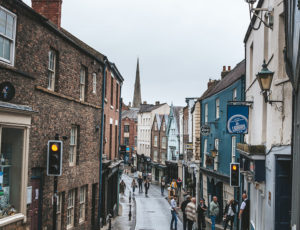Knowledge, time and fear prevent 72% of UK independent retailers from using social media

Knowledge, time and fear are the key barriers preventing the 72% of UK independent retailers that aren’t active on social media platforms such as Instagram and Facebook; despite 66% of consumers spending three hours a day on social media. This was one of the conclusions of an industry Round Table discussion attended by BID Managers and Town Centre Teams from across the UK, hosted by Maybe*.
The first conclusion is that not enough independent retailers believe social media will work for their business. If they haven’t embraced social media themselves and don’t shop online, they tend to see no value in it. Polly Barnfield, CEO at Maybe*, reveals more. “One of our attendees talked about a retailer in their area who holds none of his stock digitally. He doesn’t shop online, so he can’t begin to imagine how anyone else would.
“Yet he is exactly the type of retailer who would have benefited from being on social media during successive lockdowns, because people were still buying for others and themselves. And there’s a whole raft of businesses like his. If people don’t return to shops in the same way as pre-Covid, their inability to make digital part of their offering could be the end for them.”
Knowledge is only part of the story. Investment in time and money is also an obstacle.
Barnfield continues. “There is a swathe of independent retailers who don’t feel they can invest to set up their social media presence; even though there are schemes running in many areas to pay for them to get established.
“We heard about a small, independent retailer on an online marketplace. She has her own website, but it can take her and her team two or three hours a day to keep her channels updated. If you factor in the physical time it takes to update stock, and then you have to pay commissions on these marketplaces as well, you can see why some independent retailers judge it not to be a priority.”
However, other attendees felt the reason might be more fundamental.
“Some felt that if you own a bricks and mortar shop and you can get somebody to come inside, then you think they’re likely to buy something. You create a relationship with that customer and, hopefully, they will come back again.
“But many seem to think that if they provide for customers to go online, where they’re likely to try and compare products with others, they may end up buying from somebody else. For many small independents, their priority is to just keep them coming through their front door.
“This, though, presupposes that the customer that will engage on social media is likely to be the same person as the one who already comes into the shop. That’s not necessarily true.”
With this in mind, it’s important, Barnfield says, for independents to understand digital doesn’t necessarily mean ecommerce.
“If you look at the data from Primark and B&M, you can’t actually buy from them online. But they are both exceptional at social media. Primark has held its customers’ hands throughout lockdown, and it has been rewarded with huge queues outside its stores when they reopened.
“Independent retailers need to understand that digital doesn’t have to equal ecommerce. It’s just an extension of your ground. And by not being on social media, you’re missing out on having conversation with your customers.”












